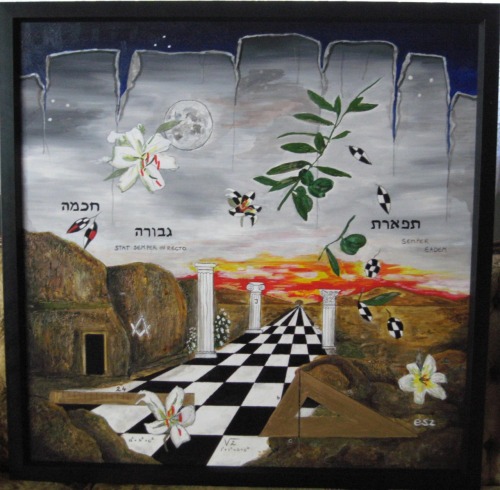 |
| "Illustrated Beatles Lyrics 2" Alan Aldridge |
<Ginkgo> , <Rose>
"The acacia thrives in barren, desert climates, and is specimens have endured for thousands of years despite drought and famine. It provides shelter for both animals and people from the scorching heat of the Sun, and its leaves and seeds are edible. These characteristics make it a symbol of protection and resilience. The tree also has vicious thorns that conceal the secrets said to be hidden by the tree. [...]
 |
 One
of the foremost symbols in freemasonry, a spring of acacia leaves is
laid on the coffin at the funerals of Freemasons in memory Hiram Abiff,
builder of king Solomon's Temple. Hiram's story of betrayal echoes that
of Christ and is one of the main tenets of freemasonry. Hiram had the
sprig of acacia laid on his grave as a si8gn not only of the death and
resurrection, but as a reminder that like the tree, Hiram refused to
divulge certain secrets. its evergreen leaf is a symbol of immortality
of the soul, and the acacia, as a symbol of incorruptibility,
signifies the purity of Hiram's soul.
One
of the foremost symbols in freemasonry, a spring of acacia leaves is
laid on the coffin at the funerals of Freemasons in memory Hiram Abiff,
builder of king Solomon's Temple. Hiram's story of betrayal echoes that
of Christ and is one of the main tenets of freemasonry. Hiram had the
sprig of acacia laid on his grave as a si8gn not only of the death and
resurrection, but as a reminder that like the tree, Hiram refused to
divulge certain secrets. its evergreen leaf is a symbol of immortality
of the soul, and the acacia, as a symbol of incorruptibility,
signifies the purity of Hiram's soul.The Greek word for "innocence"-akakia- is the same as for the tree. For Freemasons, again, this is particularly apposite since Hiram was also innocent, preferring to die rather give out the password that could have given his assassins the status of Master Mason. The tree was also the symbol of the Goddess AL'Uzza who presides over birth and death, the changing seasons, the planets, and the stars." (ISS) See Ginko, Strawberry and Rose for further related images (posts forthcoming).
No comments:
Post a Comment